Though I regularly watch birds as they preen it’s not often that I’m able to actually see the preen (uropygial) gland.
In birds the preen gland is located at the base of the tail. Most birds have it though it’s absent in many of the ratites (flightless birds) such as the emu, cassowary, ostrich, bustard and a few others. The gland is most highly developed in aquatic species, especially pelicans, petrels, osprey and oilbird.
The gland has pores similar to nipples that empty the oily secretions to the skin’s surface. Birds preen by rubbing their head and bill over the gland pores and then transferring that oil to their feathers, legs and feet.
The oil apparently functions as a dressing that enhances feather integrity and may even help to preserve the horny structure of the bill and scales of the feet and legs. There is some evidence to indicate that the gland secretion contains a substance that is a precursor to vitamin D, which is then converted to vitamin D by sunlight and absorbed through the skin. Many researchers believe that the gland functions differently in various bird species.
When birds preen they’re vulnerable because they can’t watch effectively for approaching predators with their head often buried in their feathers so they usually have to feel safe and relaxed before they do it. I was photographing this Black-crowned Night Heron out in the open at the Great Salt Lake Nature Center near Farmington Bay when…
it began to walk over to the base of a vertical stand of the previous year’s phragmites.
Here it felt relatively safe from attack and began to preen. To expose the preen gland they lift the feathers covering it vertically. Here you can see the exposed gland at the base of the tail.
Sometimes it rubbed the length of its long bill over the gland which smears the oil over the mandibles.
It would even squeeze the gland with its bill tip to obtain the oil.
In this tight crop of the previous image you can see part of the gland near the tip of the lower mandible.
Here the heron is applying some of that oil to the feather tips on its left wing.
In this shot the bird is applying oil to the feathers near the shoulder. Of course it can’t use its bill to apply oil to its head feathers so to accomplish that it would rub its head over plumage that had already been oiled.
If you have the interest here’s a video clip of a Great Hornbill obtaining oil from its preen gland and then applying it to its feathers.
Birds are fastidious about preening and keeping their feathers in good shape. Their very lives depend on it.
Ron


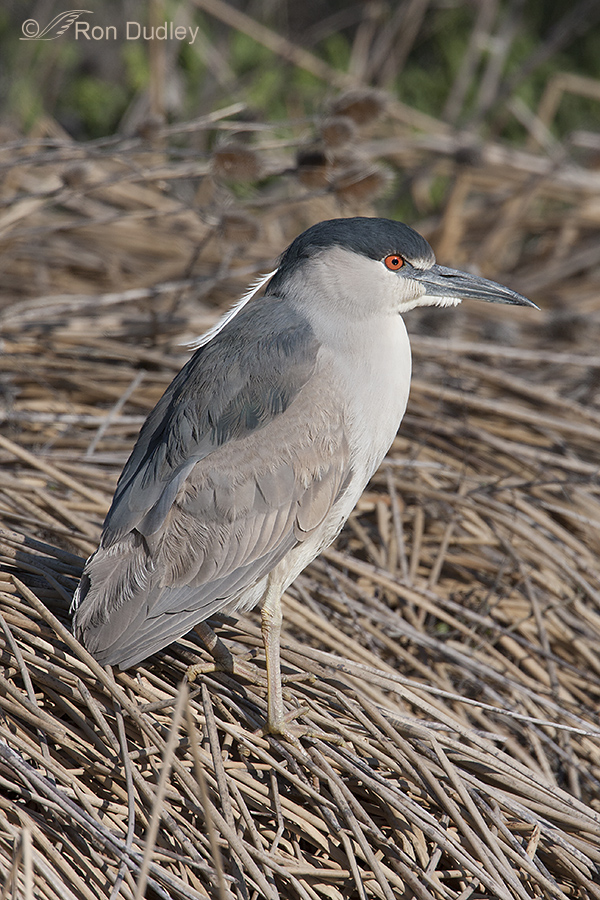
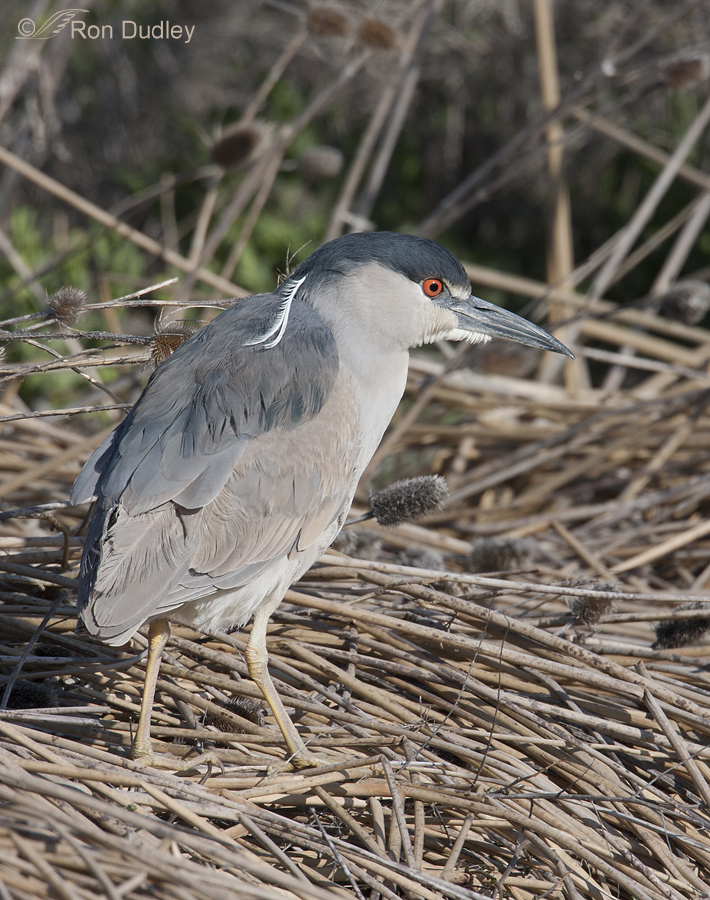
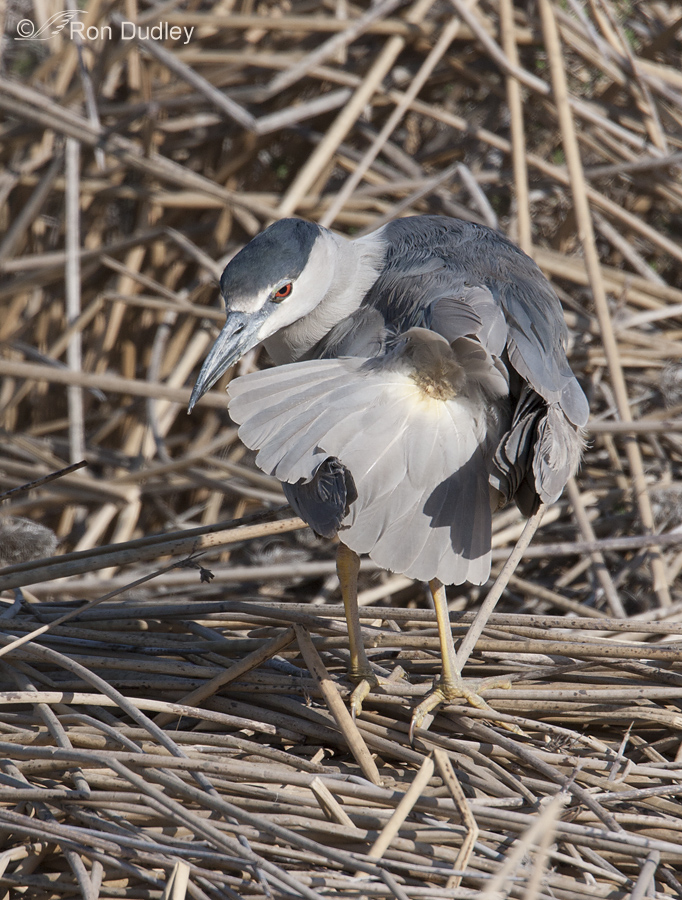
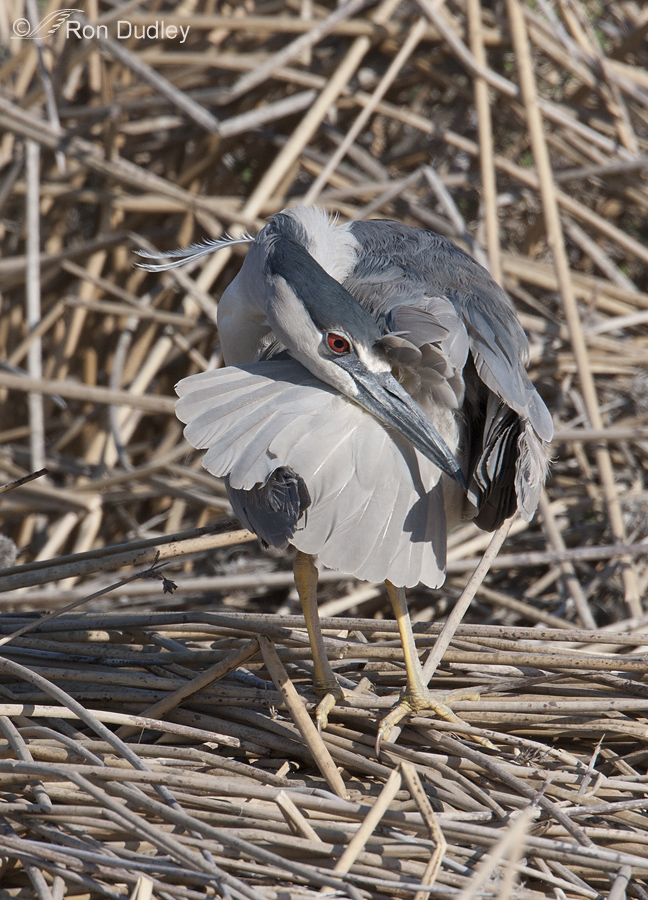
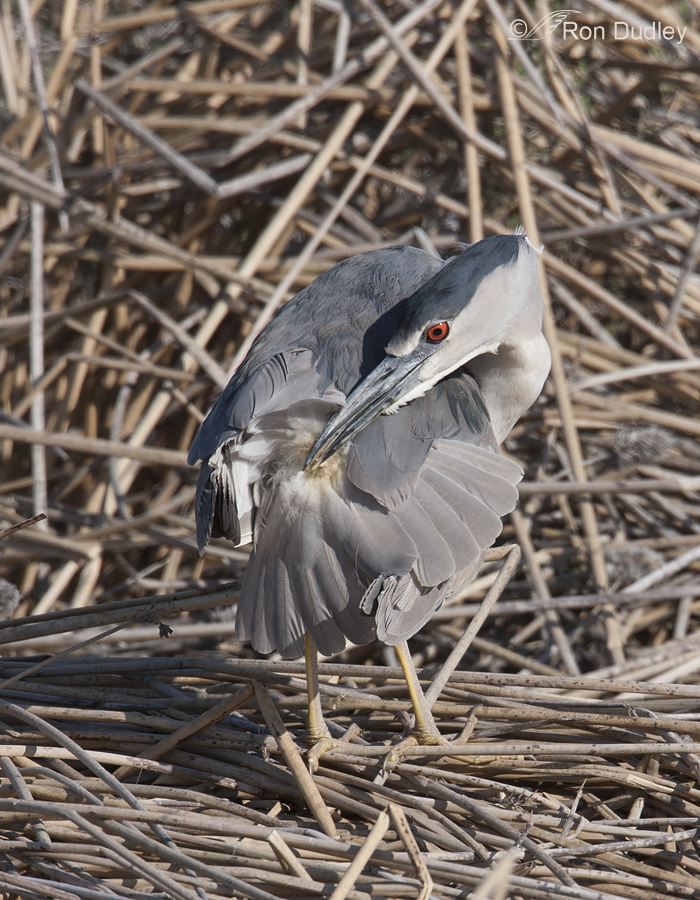
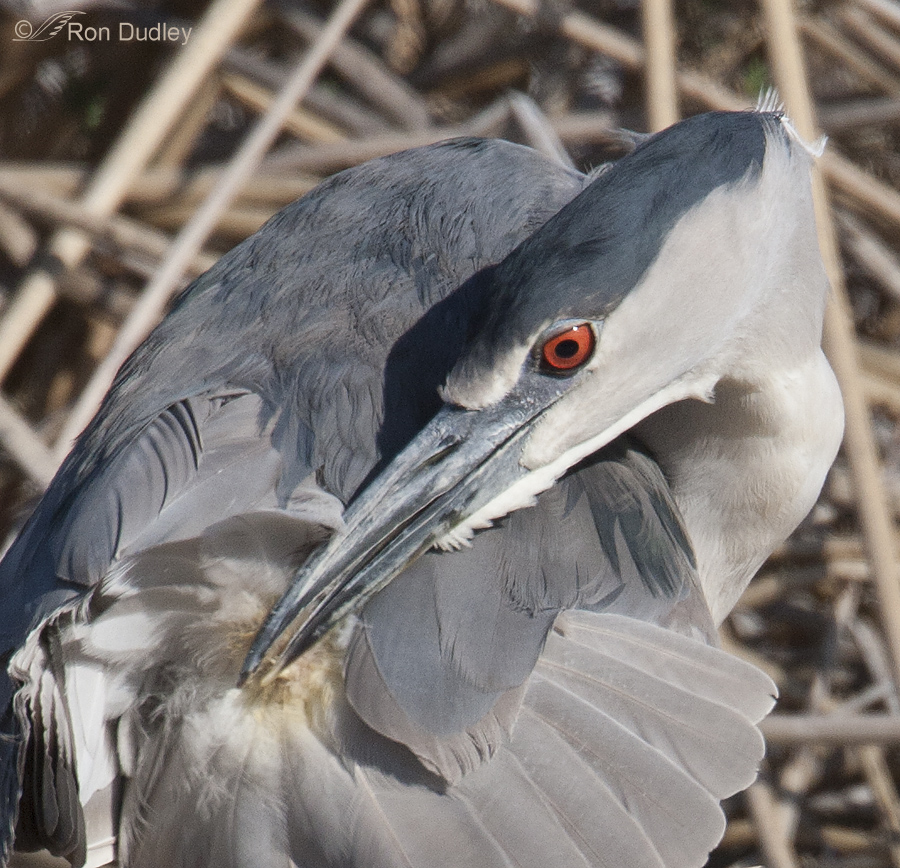
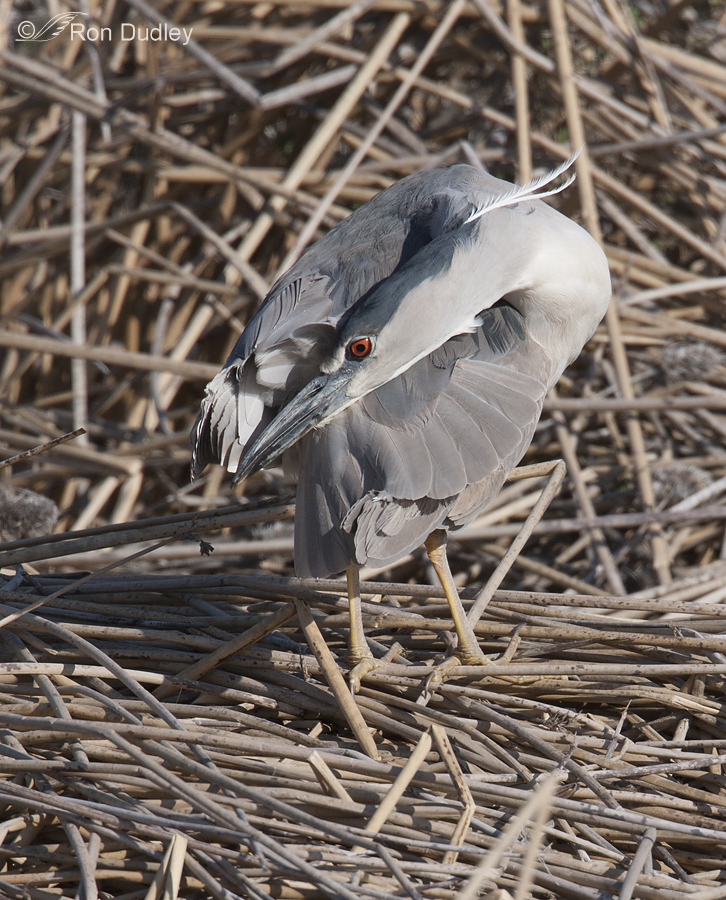
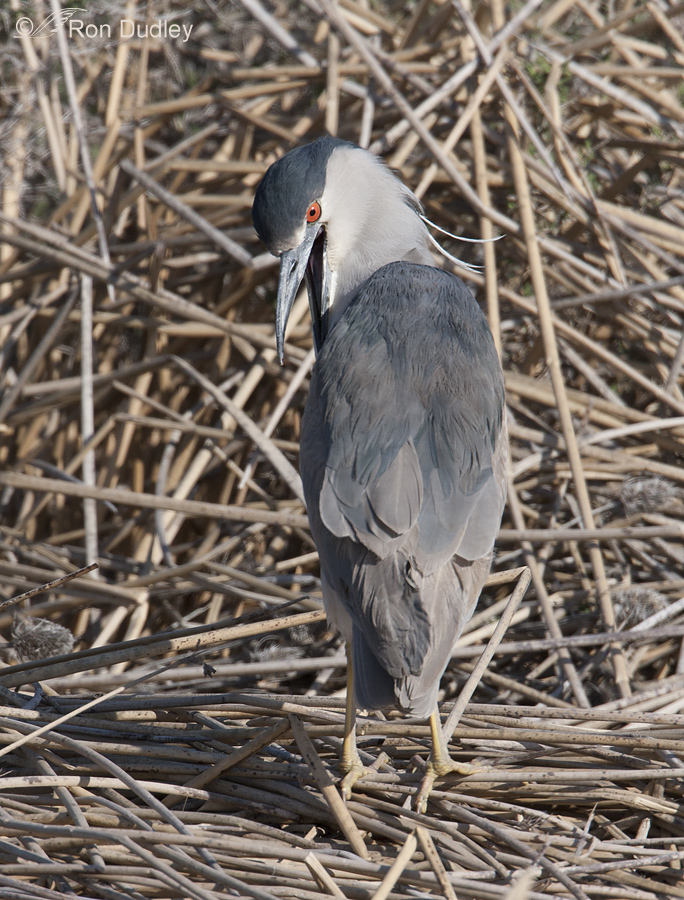
I can’t wait to show my students your wonderful pictures! Thank you so much.
This is a wonderful series of photos, of a process I’m not likely to see in person. Very interesting.
Fantastic shots and very interesting information!
Charlotte
Thank you so much for explaining the preening process. And you illustrated it so well in your sharp images. I had no idea before now about the gland for the oil that they use to preen. Nature is so amazing!
What an incredible sequence. And what an arduous task for them to undertake. Thank you.
Were these images taken with the new lens? They are incredibly crisp and clear.
Patty, These shots were taken with my “old” lens, the 500mm f/4 that I sold a few days ago. It was a very good lens!
I had been told that ducks and geese needed to preen using the oil from this gland or they would lose their buoyancy… and that it was located at the base of their tail, about where the wings cross, but that’s all I knew. I had never seen the gland itself.,although we had ducks and geese.This is not only very interesting information, but lovely images of a black crowned night heron.
Thanks very much, Patty.
Thanks Ron
I also knew about the gland but never saw it or even knew exactly where it is located. Amazing the flexibility required to apply the oil over all the feathers. Guess I never associated preening with watching the water bubble first and then run off the birds I watch. Thanks for the great pictures and explanation. I learn something from all your posts and the comments others leave.
I agree about the comments here, Diana – I learn as much from them as other folks do. It’s a two-way street around here.
Great visual lesson Ron, great images as usual. I was a bander for 40 yrs, and with a bird in hand one can feel the difference between a single feather that is not part of the bird and the feathers on the bird. And, when you watch a bird during a rain storm one can see how the rain droplets drip off the feathers as rain off an oil skin raincoat. Absolutely necessary for their survival!!
I’ve watched raindrops come off birds during rain too, Dick. Through the lens you see a lot of detail and it’s very interesting.
Hi Ron, I knew of the gland’s existence and I knew where it was, but I had never seen it before. In fact, I didn’t know it was “seeable”. I have often watched birds preen while observing them through binoculars and just assumed the gland was secreting through the skin. These are wonderful images! Thanks as always for letting light through the window so that curious minds might better explore the natural world…
Cheers,
Dick
Dick, I’ve seen the gland maybe two or 3 times in several species but it’s definitely not an every day occurrence and usually I only notice it in my images, not through the lens or with the naked eye.
I learn something from everything you post. Great photos. Thank you for taking the time to do this. It’s a great service.
You’re very welcome, Kelli.
Ron,
I loved this post. I always learn so much about the birding world from you. Such a great teacher! (And it looked like it was a beautiful day, what with the light.)
Fascinating!! Thanks so much!
Thank you, Leisa.
I never knew birds even had this gland. Thanks for being such a great teacher Ron. The pictures, as always, are amazing.
Thank you for the nice “teaching” compliment, Ellen.
I agree with Nancy, such great information and photos. Thanks!
Thanks, Bill.
Great photos and excellent information to go along with them. Thank you
I’m happy to know you enjoyed both the photos and the info, Nancy. Thank you.